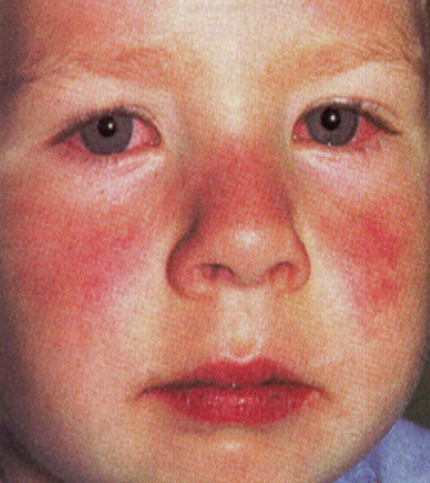Definition of "Kawasaki disease"
Last modified: 5 hours
It's a disease where the body attacks itself. It involves inflammation of blood vessels throughout the body.
Redness is the biggy, so redness of the skin, white of the eyes, and inside the mouth. A fever that keeps coming back. Enlarged lymph nodes on the sides of the neck. Swelling of the hands and feet.
Kawasaki disease (aka lymph node syndrome) is an autoimmune disease involving vasculitis (i.e. inflammation of blood vessels) throughout the body.
Patient information
What is kawasaki disease?It's a disease where the body attacks itself. It involves inflammation of blood vessels throughout the body.
Sx
- Skin, conjunctivae of the eyes, and oral mucosa become red and inflamed

Source: Wikimedia

Source: 2015/12/kawasaki-disease-symptoms_red-boodshot-eyes.jpg">Cloudfront
- Swelling of the hands and feet
- Cervical lymph nodes are often enlarged
- Recurrent fever, often 37.8 degrees C or higher, is characteristic of the acute phase of the disease. In untreated kids, the fever lasts about 10 days, but can range from 5-25 days
- Rarest but most serious effect is on the heart, where it can cause fatal coronary artery aneurysms in untreated kids
Patient information
What happens in this disease where the body attacks itself, causing inflammation of blood vessels throughout the body?Redness is the biggy, so redness of the skin, white of the eyes, and inside the mouth. A fever that keeps coming back. Enlarged lymph nodes on the sides of the neck. Swelling of the hands and feet.
Pathophysiology
- Pre-existing viral infection may be involved in its pathogenesis
- Affects many organ systems, including blood vessels, skin, mucous membranes, and lymph nodes
Epidemiology
- Without Tx, mortality may approach 1%, uusally within 6 weks of onset
- With Tx, the mortality reduces to 0.17%
See also
- Largely seen in kids <5yo
Synonyms:
Kawasaki
Kawasaki syndrome
Lymph node syndrome
Mucocutaneous lymph node syndrome
Mucocutaneous lymphadenopathy
Find a practitioner
Practitioner count: 0
Sponsor a disease. And see how your proceeds help.
$1
Express interest
$10
Write text
$40
Write FAQ
$100
Snap photos
$400
Record audio
$1k
Produce video
$4k
Interview experts